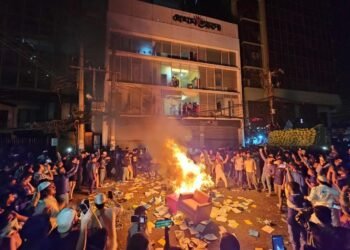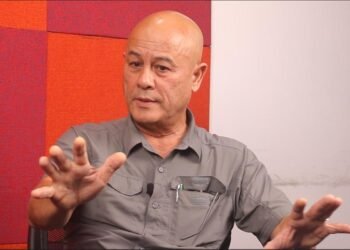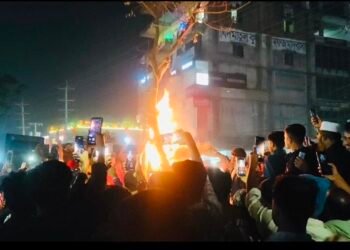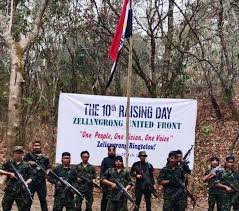The Syrian civil war has reached a dramatic conclusion with the fall of the Assad regime. Rebel coalitions now hold power, promising elections and reconstruction efforts. Amid celebrations, the world watches anxiously as Syria faces the daunting task of uniting a divided population and rebuilding from the ashes of conflict.,
BY PC Bureau
In a dramatic turn of events, rebel forces have declared victory in Syria, claiming control over key cities, government institutions, and military installations. After more than a decade of civil war, the fall of President Bashar al-Assad’s regime marks the end of an era but leaves the nation grappling with uncertainty and division. Unconfirmed report said that Assad was killed in a plane mishap while fleeing the country.
The Collapse of the Regime
The takeover began with a coordinated assault on Damascus, led by a coalition of rebel groups under the banner of the “United Syrian Liberation Front” (USLF). This coalition, which includes remnants of the Free Syrian Army (FSA), Islamist factions, and regional militias, launched a decisive campaign after seizing control of strategic strongholds in Homs, Aleppo, and Latakia over the past year.
By mid-November, Assad’s forces were in retreat, their numbers diminished by years of attrition, defections, and dwindling support. The final blow came when rebel forces breached the heavily fortified Presidential Palace in Damascus, prompting Assad and his closest allies to flee the capital. Reports suggest they sought refuge in Latakia, but the city fell to rebels within days, leaving Assad’s whereabouts unknown.
Scenes of Celebration and Chaos
As news of the regime’s collapse spread, celebrations erupted in liberated areas. Crowds gathered in Damascus’s Umayyad Square, waving the revolutionary flag and chanting slogans of freedom. In Aleppo and Idlib, the mood was jubilant as citizens flooded the streets to mark what many called a “historic victory for the Syrian people.”
However, the euphoria was tempered by chaos and uncertainty. Looting was reported in several cities as security forces abandoned their posts. Rival factions within the USLF have already begun jockeying for power, raising fears of infighting that could plunge the nation into further conflict.
International Reactions
The international community has reacted with cautious optimism. The United Nations Secretary-General called for calm, urging the rebels to respect international law and protect civilians. “This is a pivotal moment for Syria. The people’s aspirations for freedom must be met with unity, not division,” he said in a statement.
Regional powers are already positioning themselves to influence the post-Assad era. Turkey, which supported various rebel factions, hailed the victory and pledged to aid in reconstruction efforts. Iran, a staunch ally of Assad, condemned the takeover as a “Western-orchestrated coup” and vowed to protect its interests in the region.
The United States and European Union welcomed the end of Assad’s regime but warned against the rise of extremist elements within the rebel ranks. The fall of Damascus has reignited concerns over who will wield power in the vacuum left behind.
Challenges Ahead
Despite their triumph, the rebels face an uphill battle to stabilize the country. Syria’s infrastructure is in ruins after years of war, with entire cities reduced to rubble. An estimated 12 million people are displaced, and basic services like electricity, water, and healthcare are almost non-existent in many areas.
Humanitarian groups have called for immediate international assistance, warning of a looming humanitarian crisis. “The war may be over, but the suffering of the Syrian people continues,” said a spokesperson for the International Red Cross.
Moreover, ideological divisions among the rebels could threaten the fragile unity of the USLF. Secular and Islamist factions have clashed in the past, and analysts warn that the absence of a clear vision for governance could lead to infighting.
The Road to fall of Assad
For decades, Syria was ruled by a regime that masked its authoritarian grip with a façade of stability. The streets of Damascus hummed with the daily lives of people who dared not question the whispers of dissent that swirled beneath the surface. But the Arab Spring of 2011 lit a spark across the Middle East, and Syria was no exception. Citizens took to the streets, demanding reforms, freedoms, and the resignation of President Bashar al-Assad. The regime responded with brutal force, and what began as peaceful protests soon erupted into civil war.
As the government cracked down on protesters, factions began to form. The Free Syrian Army (FSA), composed of defected soldiers and civilians, emerged as the face of the rebellion. Islamist groups, opportunistic warlords, and Kurdish militias also entered the fray, each with their own agendas. The once-unified cry for freedom fractured into competing visions for Syria’s future.
The rebels captured rural areas, gaining a foothold in the north and east. Cities like Aleppo and Raqqa became battlegrounds. The regime, backed by allies like Russia and Iran, clung to power in Damascus and the coastal regions, using airstrikes and chemical weapons to hold territory. The international community watched in horror, debating intervention but offering little concrete aid.
By 2015, the war had devolved into chaos. The Islamic State (ISIS) seized large swathes of territory, including Raqqa, declaring it their capital. The rebel movement was splintered, with groups like Jabhat al-Nusra (later rebranded as Hay’at Tahrir al-Sham) fighting both Assad’s forces and rival factions.
The rebels have now announced plans to form a transitional council to oversee the country’s rebuilding efforts. Leaders of the USLF have pledged to hold elections within a year and to draft a new constitution that represents all Syrians.
For now, the focus is on restoring order and rebuilding a nation shattered by over a decade of war. But the question remains: can the rebels deliver on their promises, or will Syria fall victim to the same cycles of division and violence that have plagued it for so long?
As Syria turns a new page in its tumultuous history, the world watches with hope and trepidation. The fate of a nation hangs in the balance.













